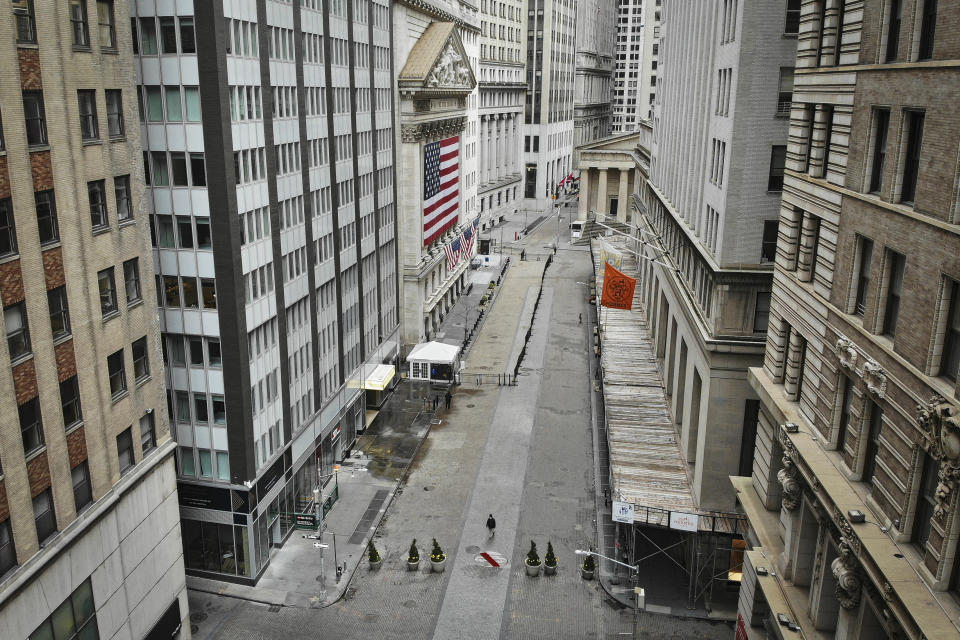The S&P 500 hitting 1,700 wouldn't be bonkers
Before dipping your toes back into a bear market — one that is prone to insane rip-your-face-off rallies like the 1,600-point move in the Dow Jones Industrial Average on Tuesday — it’s worthwhile to consider the worst. Doing that would go a long way to protecting your portfolio right now from even more bone-crushing pain.
And for some top minds on Wall Street, the worst could be yet to come for the major equity indices dealing with their own bout of coronavirus. Cowen head of market strategy Chris Pollard tells Yahoo Finance that S&P 1700 isn’t out of the realm of possibilities. The S&P 500 currently trades at 2,432 — so Pollard has laid out a potential 30% dive for the key benchmark.
Pollard points out stocks are not trading on the trough price-to-earnings multiple seen in past crises and earnings estimates for the S&P 500 likely remain too high.
In other words, as shocking economic data hits the tape in coming weeks worldwide — reflecting total shutdowns of economies because of COVID-19 — investors may be forced to re-price risk assets again.

“The breaking point [for the S&P 500] was 2,350, that was the last clear technical support and this market is really bing dictated by technicals right now. Since we can’t do the fundamental work to establish a valuation framework, the market could go lower than that, frankly,” Pollard said on Yahoo Finance’s The First Trade.
Pollard added, “The last time we had real global recession fears, the market traded around 2,100 to 1,800. Yes, that’s wide range. Not very precise. I do think that is an appropriate level looking for real support coming into view here should this virus remain protracted in the near-term.”
Invesco global market strategist Brian Levitt has a dire what if scenario for the S&P 500 as well: 1,800.
Similar to Pollard, Levitt thinks the market’s price-to-earnings multiple and S&P 500 earnings estimates haven’t bottomed. So, it’s plausible there remains a good bit of downside risk.
At least for today though, those quasi predictions look extreme. Both the Dow and S&P 500 rallied hard following the Fed’s unlimited stimulus announcement Monday and what may be a $2 trillion-plus relief plan by the government. But again, it often pays to know the worst.
Brian Sozzi is an editor-at-large and co-anchor of The First Trade at Yahoo Finance. Follow Sozzi on Twitter @BrianSozzi and on LinkedIn.
Read the latest financial and business news from Yahoo Finance
Follow Yahoo Finance on Twitter, Facebook, Instagram, Flipboard, SmartNews, LinkedIn, YouTube, and reddit.

 Yahoo Finance
Yahoo Finance 